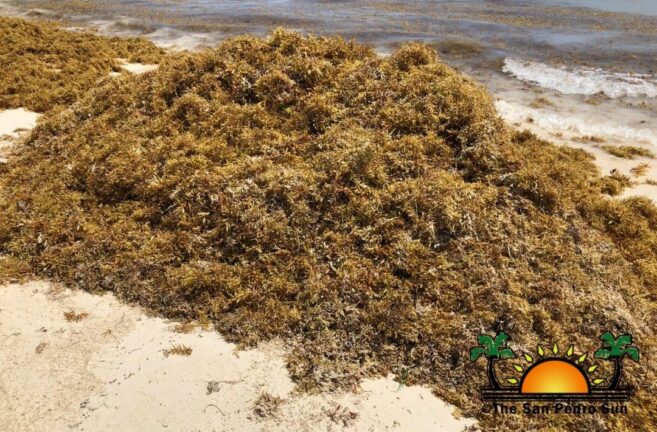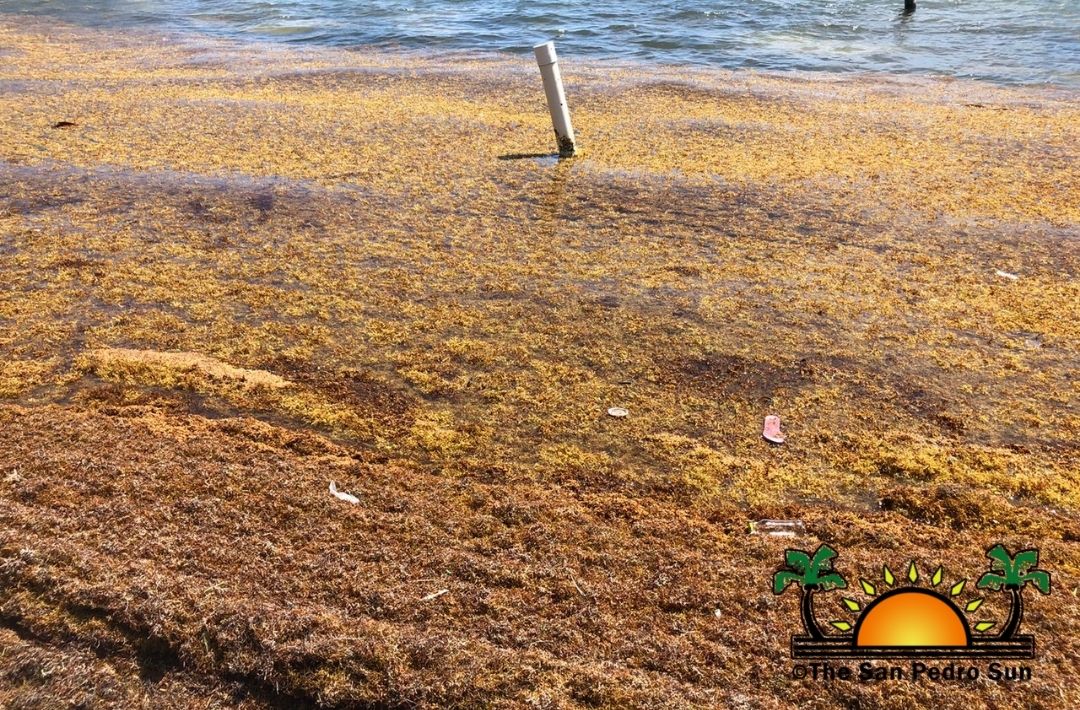As tourism continues in Belize, the first waves of Sargassum are starting to beach along the Belizean Caribbean coastline and cayes. According to the National Meteorological Service, the latest observations projected from March 9th to the 22nd show an increase in the brown algae near Belize. The forecast indicates the possibility of a medium to high chance of more Sargassum polluting the beaches.
The places in Belize where high concentrations of seaweed are expected include Hopkins and Placencia in southern Beliz, with Caye Caulker and San Pedro Town expecting less. The windy days associated with March are piling up Sargassum along the island’s eastern shore. Hoteliers and residents have started to keep their areas free of the algae, which releases a foul smell as it rots on the beach.
Mayor Gualberto’ Wally’ Nuñez said the San Pedro Town Council might spend around $20,000 every year to rid the beaches of seaweed. “It is becoming a problem again,” said Nuñez. “At the moment, we are partnering with the Belize Tourism Board (BTB) to mitigate the problem. We are also in the process of getting a beach rake like those used in Caye Caulker, which has proven good results.” Nuñez said with assistance from the BTB, they expect to get the beach rake as soon as possible.
In the past, hotels have created task forces comprised of dozens of islanders to battle the constant mats of seaweed washing ashore. The task is a different challenge every year, and this year is no exception. Information from the Optical Oceanography Laboratory of the University of South Florida indicates that Sargassum in the Caribbean Sea has increased by more than 100% since December 2021. Its current biomass is estimated to be from 1.7 to four million tons. Compared to previous years, this suggests that 2022 could be a year of high Sargassum concentration. If conditions for its growth continue to be favorable, it can double its biomass in less than 20 days.
Sargassum reaches the Caribbean from the Sargasso Sea in the Bermuda Triangle of the North Atlantic Ocean and a new area north of the equator. This area by the equator accumulates off the Brazilian coast before entering the Caribbean Sea. According to researchers, the presence of Sargassum on beaches indicates pollution triggered by human activities in the seas and coasts. The rapid growth of the algae is stimulated by irregular and inadequate treatment of sewage water and agricultural runoff rich with fertilizer. The influx of this marine plant will continue moving west of the Caribbean region, affecting countries like Belize, the Mexican Quintana Roo coast, the Gulf of Mexico, and areas like Florida in the United States of America.


